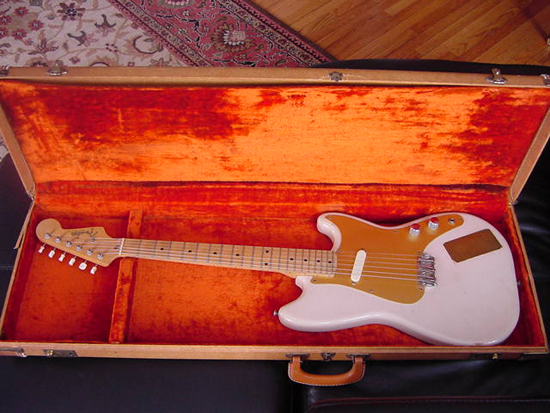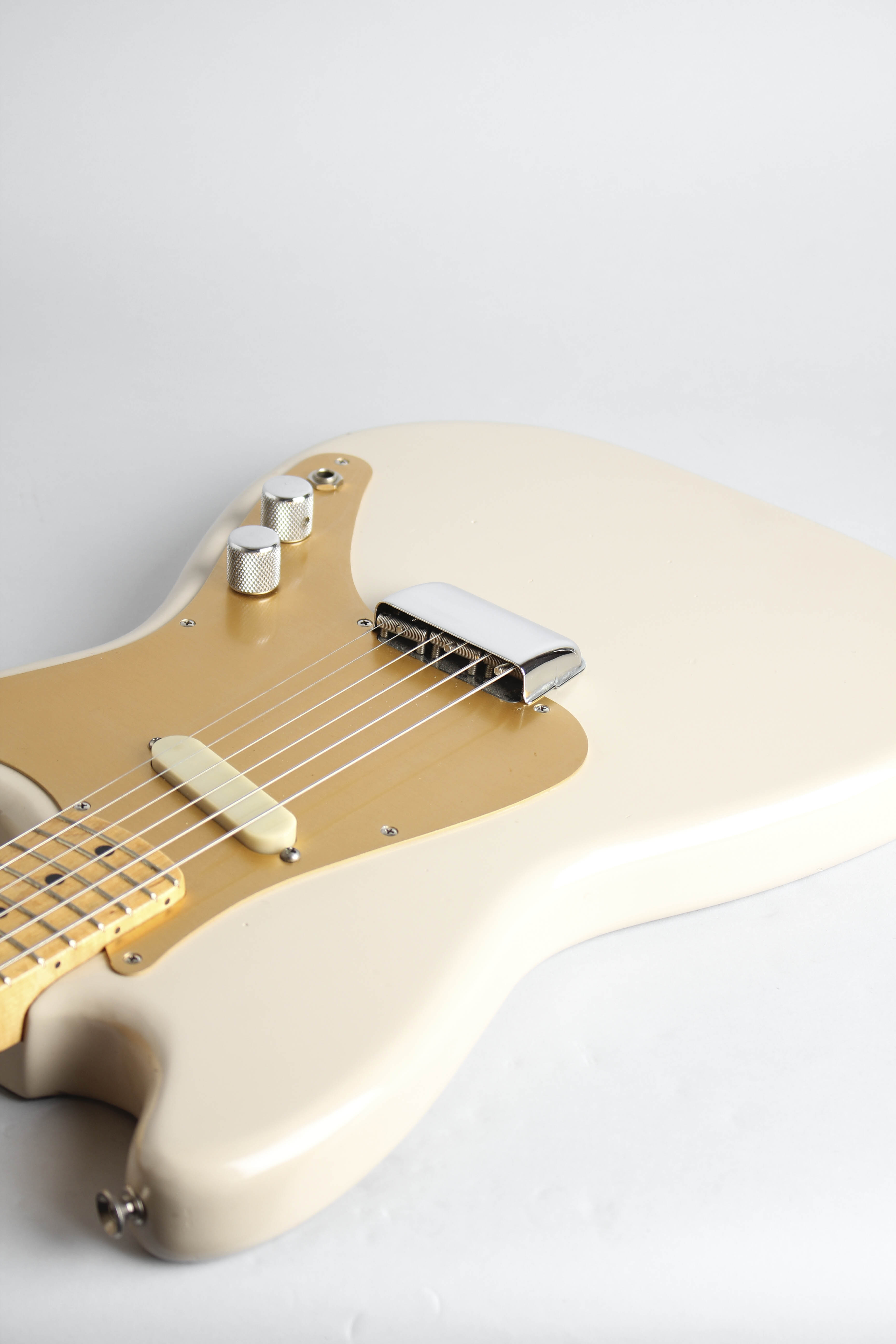
A silver “spaghetti” logo decal was affixed to the headstock of the Musicmaster, while the later Duo-Sonic would get a gold logo. The earliest examples (from March through June of ’56) were fitted with the “no-line” Kluson machineheads. The ¾ guitars also had the exact headstock dimensions as seen on the Stratocaster, with a single butterfly string retainer and six-on-a-side “single-line” Kluson Deluxe tuning gears with white plastic buttons. And Fender’s ¾ neck profiles always mirrored the chunky V shapes of the necks on Telecasters, Esquires, and Stratocasters of the era, along as well as the standard narrow fret wire. Like other Fender necks of the era, the truss rod was installed through a rout in the back of the neck, and a walnut “skunk stripe” filled the channel. To compensate for the first-run missteps, by May, the guitars were being made with the more-familiar 1950s appointments – one-piece, 21-fret, bolt-on maple neck with 22½” scale and a nut width of 1 5⁄ 8“. So after the initial run, the guards were made of plastic. Pickguards were aluminum, which may have been chosen for its durability (as beginners tend to be heavy-handed), but ironically, the black paint Fender applied did not wear well. Early examples differed in several ways, including having slightly thicker bodies made of ash, and some have areas that were hand-chiseled to fix mistakes in the initial tooling.

Sales manager Don Randall chose the name because he thought it “sounded kind of cute” and fit with the existing master-model monikers (i.e. Production began in April on the single-pickup Musicmaster. Here’s a year-by-year look at the history of the these entry-level axes. But today, veteran and neophyte vintage guitar collectors alike are intrigued by these little guitars, in part because they were made with the same care as their more costly siblings even if, compared to the Stratocaster, they were an evolutionary step backward. Leo responded, and the first run of single-pickup Musicmasters was ready in early May of 1956.ĭubbed “¾ instruments,” Musicmasters had much shorter scale lengths and other features intended to make them attractive to a younger, more frugal student player. Often forgotten amongst Fender’s classic line of vintage electric guitars, the definitive (and diminutive) Musicmaster and Duo-Sonic student-grade models were conceived to capitalize on the fact teenagers were taking up the guitar in droves as Bill Haley and the Comets’ “Rock Around the Clock” rode the Billboard charts for 10 weeks in the summer of 1955.įender’s Sales division was acutely aware at the time that nobody would be using a Champion lap steel to try and emulate Danny Cedrone’s guitar solo, so it asked company president Leo Fender – known for his ability to devise a new product in as little as three months – to round out their Spanish-guitar offering with the two beginner models.

1957 Musicmaster with custom black finish.


 0 kommentar(er)
0 kommentar(er)
